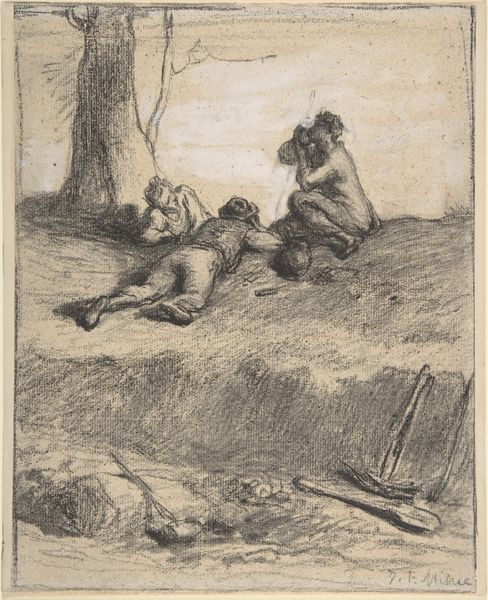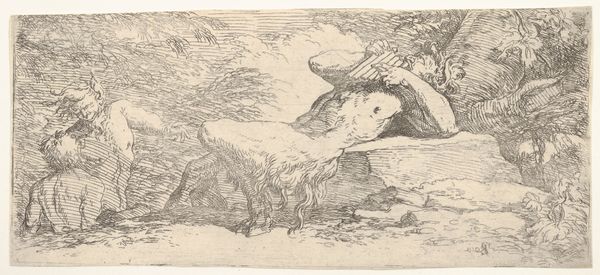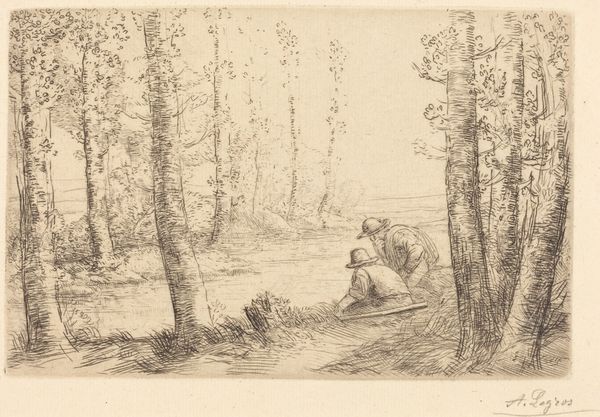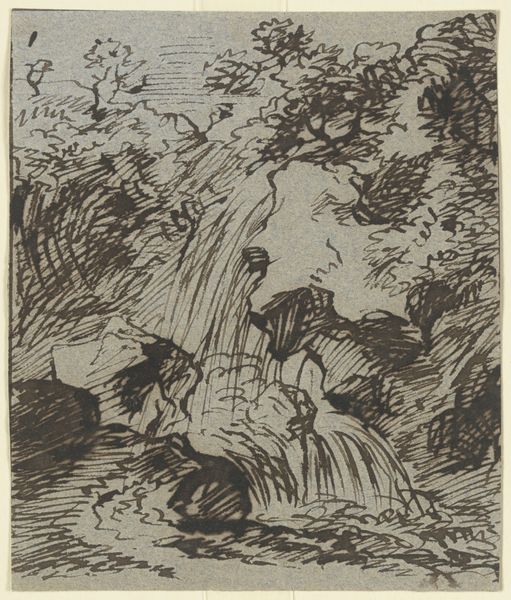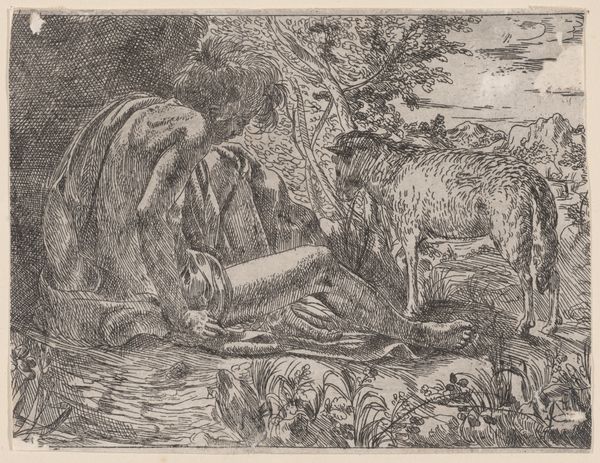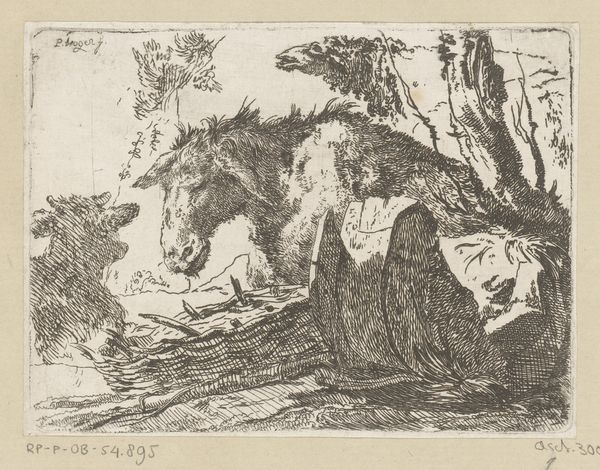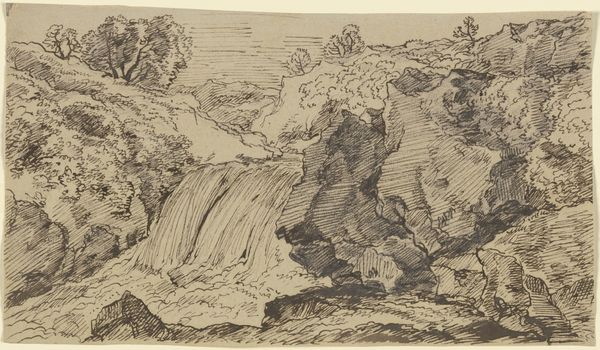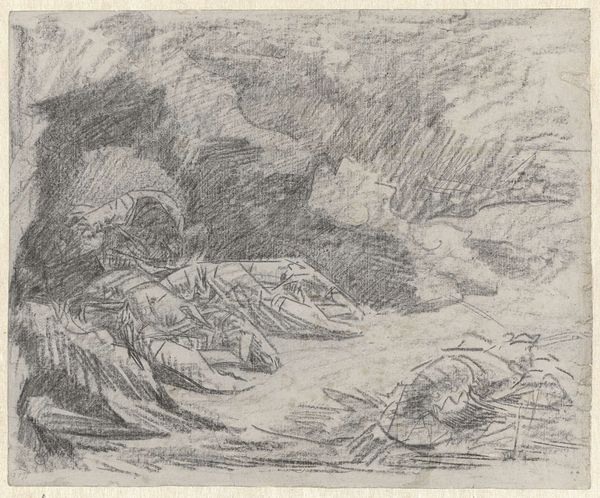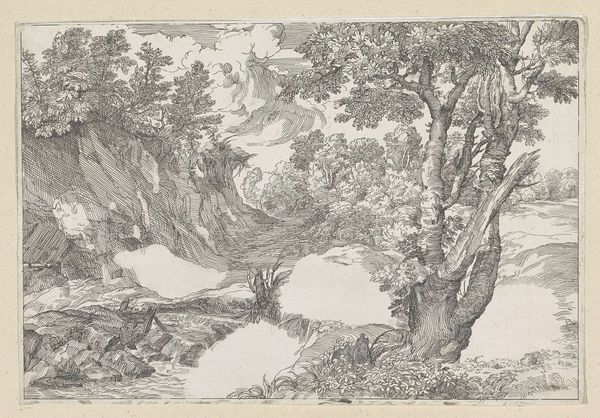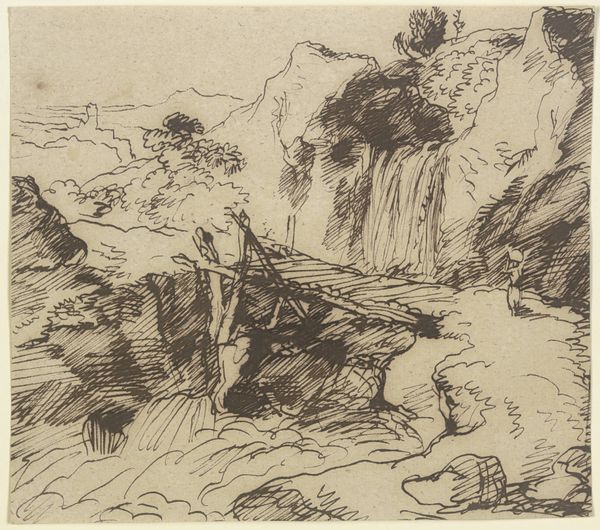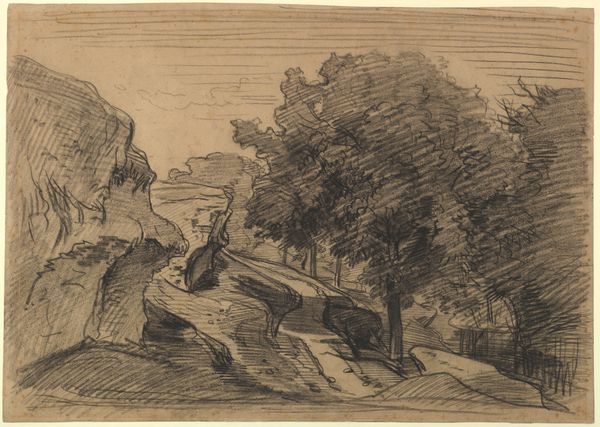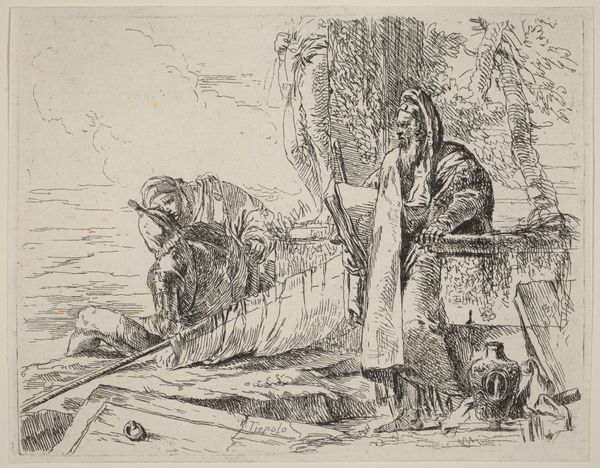
drawing, print, graphite
#
drawing
#
narrative-art
# print
#
landscape
#
figuration
#
pencil drawing
#
romanticism
#
graphite
#
history-painting
#
nude
Dimensions: Image: 10 3/16 x 7 3/8 in. (25.9 x 18.8 cm) Sheet: 17 x 13 11/16 in. (43.2 x 34.8 cm)
Copyright: Public Domain
Curator: This is Eugène Delacroix’s 1843 pencil and graphite drawing, "Death of Ophelia," currently held at the Metropolitan Museum of Art. Editor: There’s an incredible fragility in the rendering of her body against the dense, almost oppressive, landscape. The way the graphite captures the texture of the water, yet she seems weightless within it… Curator: Absolutely. Delacroix's Romantic style aimed to evoke emotional responses. He engages with the popular themes of literary tragedies and the sublime through his treatment of the landscape surrounding Ophelia’s suicide. Her presentation and the landscape reflect broader anxieties within French society at this time. Editor: I'm particularly struck by the material process; how Delacroix layers graphite to build shadow and depth. It creates such an interesting interplay between light and dark and brings out the sense of the scene and what Ophelia’s body is experiencing. How much of the romantic interpretation do you think comes down to this particular way of marking, with this particular material? Curator: I'd argue that a significant portion stems from its engagement with the pre-existing imagery of the character and narratives popularized by theatrical productions in Parisian theaters at the time, thus appealing to existing notions of sensitivity to the literary. Delacroix presents Ophelia as a subject of delicate femininity, echoing the period's art criticism which valued expression of literary history. Editor: So, her stillness against that rather churning, active pencil work creates a powerful contrast of her as subject. I am wondering, however, is the drawing presented as finished? It appears to be, but do you think he would have moved onto another material, like oils? Curator: It’s presented as a finished study here. In that period it circulated as prints and so participated in the print culture. What is important to note about the pencil itself as material, is that this work, its status as drawing also shaped what audiences could think a completed piece could look like in an evolving system of artistic prestige. Editor: I see what you mean. Thanks. That’s interesting to consider the cultural expectations placed on both the artist and the audience. Curator: Exactly. Thank you. It's crucial to remember the layers of history and representation informing our experience of this image.
Comments
No comments
Be the first to comment and join the conversation on the ultimate creative platform.
